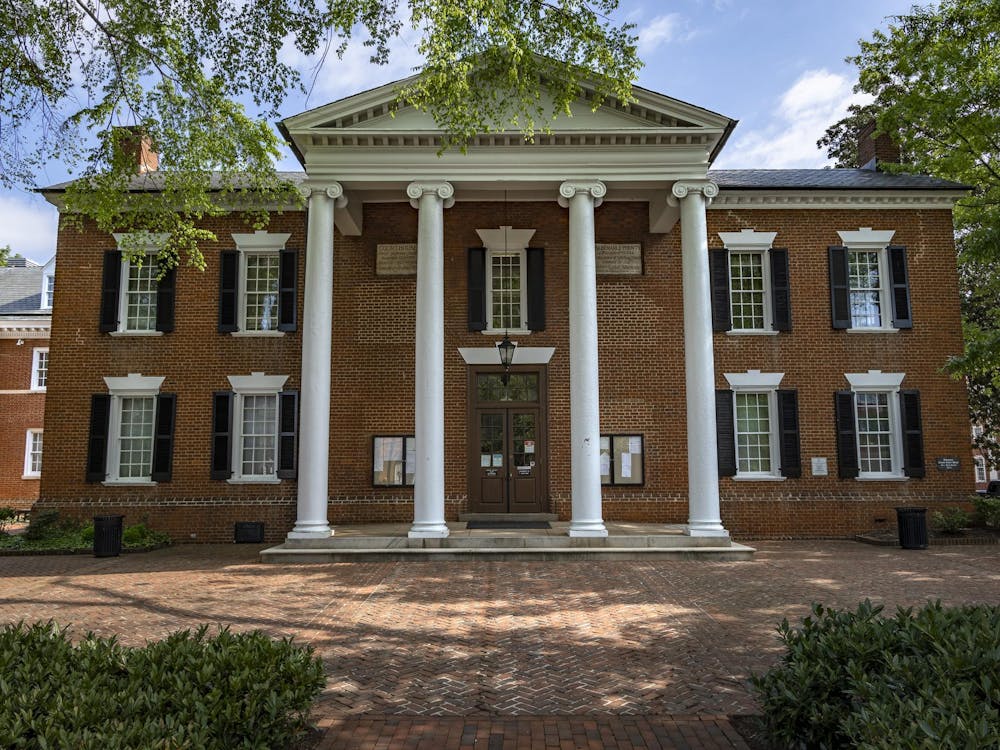AMBIGUITY and vagueness are two well-known devices that allow politicians to present ideas or plans to a wider audience without actually having to state the specifics of said ideas and plans. Often, if such people were to express their intentions clearly, they might not get a desired reaction or approval from the majority. Unfortunately, it seems we have come face to face with a similar scenario here at the University.
The University administration is considering the removal of the beloved magnolia trees that surround the iconic Rotunda to allow for repairs to the building's leaky roof as part of the greater restoration of the Academical Village. Many students, faculty and staff are appalled and angry about the recent decision. I myself am disheartened by the move after having come to admire the aesthetically pleasing vision of generations-old trees flanking the Rotunda.
In a recent email to third- and fourth-year students, President Teresa A. Sullivan acknowledged the students' concerns. Sullivan outlined the Board of Visitors' reasons for considering the removal of the trees, including the fact that the magnolias are nearing their projected lifespan and reside too closely to the Rotunda. Sullivan continued, "Arborists - our own as well as outside experts - believe that the repair work on the Rotunda will only exacerbate the trees' already fragile state."
Yet, is the fragility or closeness of the trees the real issue at hand? The precise age of the magnolias is not even known, according to a statement from University arborist Jerry Brown that was quoted in The Daily Progress. A separate statement issued by the University's Office of the Architect said the replacement of the roof "will impact the magnolias due to required scaffolding, materials lifts and access points." This makes it sound as though it is the roof of the Rotunda that will impact the trees and not the trees' fragile state that will necessitate their removal.
These two accounts savor of inconsistency. Even the aesthetic quality of the trees is under attack by the Office of the Architect, which claimed that a grown magnolia is "a massive tree [of a scale] not appropriate adjacent to historic buildings." Such a difference in scale, however, has never seemed to prevent the University from advertising and cherishing the iconic building, trees and all, in many different venues such as its current place on the University website.
The statement from the Office of the Architect further defends the removal of the magnolias by saying "although some of the trees could be preserved throughout the process," the trees will have to be removed eventually for the larger Rotunda restoration project. In other words, it seems there is no pressing need to remove the trees at least until after the roof repairs are completed.
Larry Steward, former assistant director of Grounds, also brought up the history of past Rotunda renovations in a comment on the online student petition for saving the magnolias. "We completely renovated and restored the Rotunda in 1973 to 1976 for the US bicentennial without removing those magnolias," he said. "There was scaffolding around the building then, why do the magnolias have to be removed now?" If the Rotunda was successfully renovated then without removing the magnolias, what methods were used to spare the trees? It would behoove the University to explore all possible renovation options and review this prior knowledge at its disposal before making any definitive decision to remove the trees.
University Architect David Neuman cited several reasons for felling the trees and told The Cavalier Daily ("BOV discusses Rotunda repairs," Nov. 11), "There's a design in progress that will be more Jeffersonian. The original Jefferson design did not have any of [these magnolia trees]." While the trees are not technically "Jeffersonian" or part of Jefferson's original design, they have gained support from the University community after having been here for generations. Neuman's reasoning seems feeble and does not provide a convincing rationale for cutting down the magnolias.
University spokeswoman Carol Wood acknowledged the passion students are showing for the Rotunda, but she also defended Neuman by noting that "as the University architect, he is called on to make difficult decisions, and in this case he cannot put the Rotunda in jeopardy," according to The Daily Progress.
Third-year Engineering student Yatzek Krzepicki started a petition to save the trees, which has now garnered more than 3,000 signatures. He too is confused by the University's reasoning and was quoted in The Daily Progress as saying initial "statements seemed to focus on scaffolding and concerns about potential storm damage. Now, [Sullivan] only cites the end of [the magnolias'] lifespan, and implies that the root structure has some role to play."
Similarly, fourth-year College student Travis Dennis said in an email, "[T]he guiding philosophy behind certain choices has not been clearly stated, and it seems much of the UVA family would find it disagreeable if it were made plain." This kind of observation further suggests the University's vague and often conflicting statements hark back to the ambiguity of the political arena.
So my fellow students, staff and faculty, if you do not want to see our generations-old magnolias being torn down, sign Krzepicki's petition on Change.org as a first step toward defending our trees. Let us fulfillPresident Sullivan's prediction that "we will preserve the Rotunda and enable future generations to value and celebrate it" by keeping our beautiful magnolias intact during renovations and demanding more transparency from the University as it moves forward with renovation plans.
Devon Darrow's column normally appears Thursdays in The Cavalier Daily. She can be reached at d.darrow@cavalierdaily.com.






